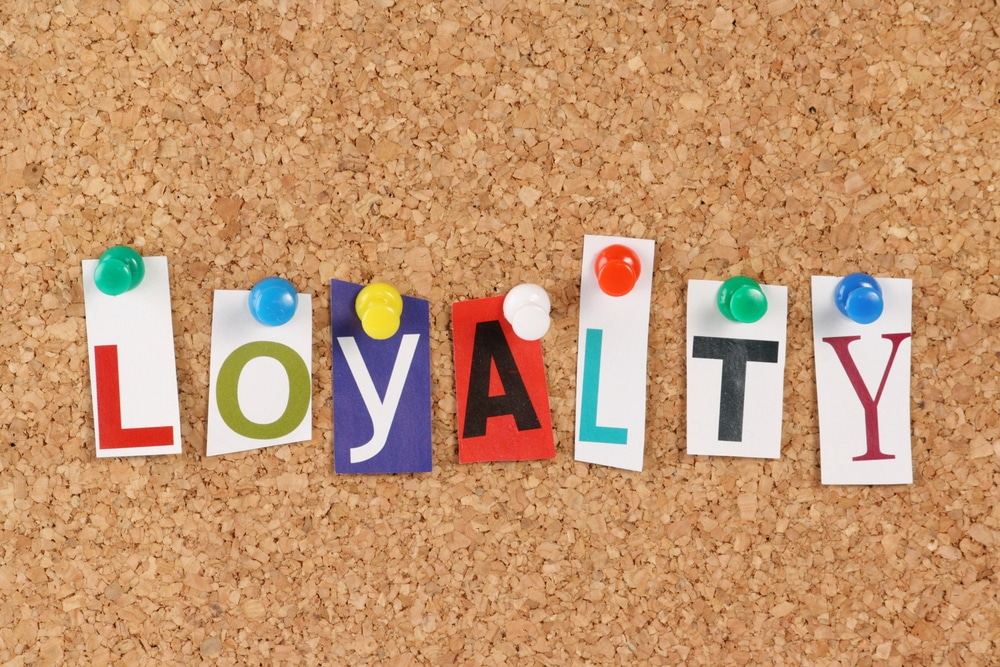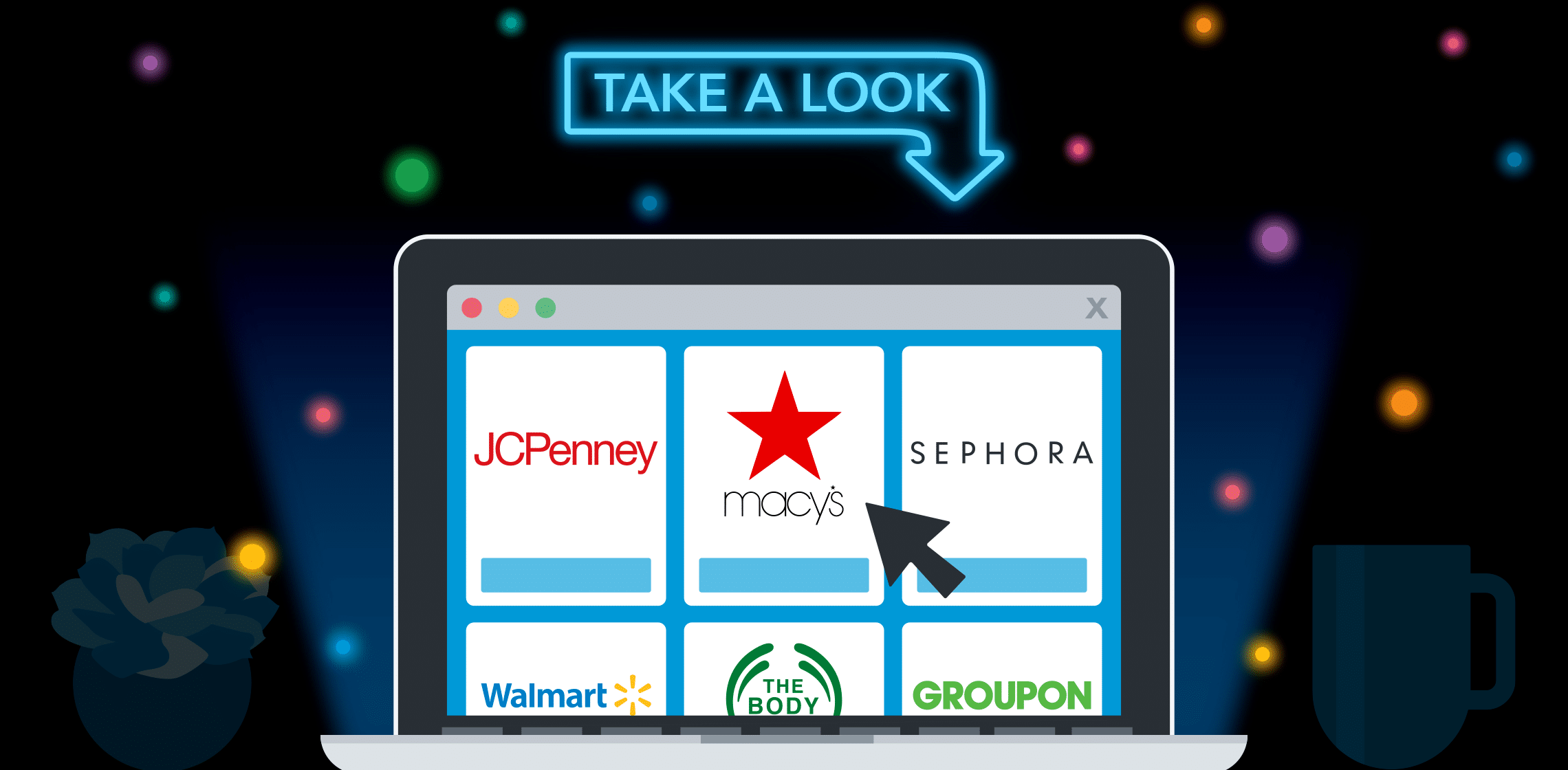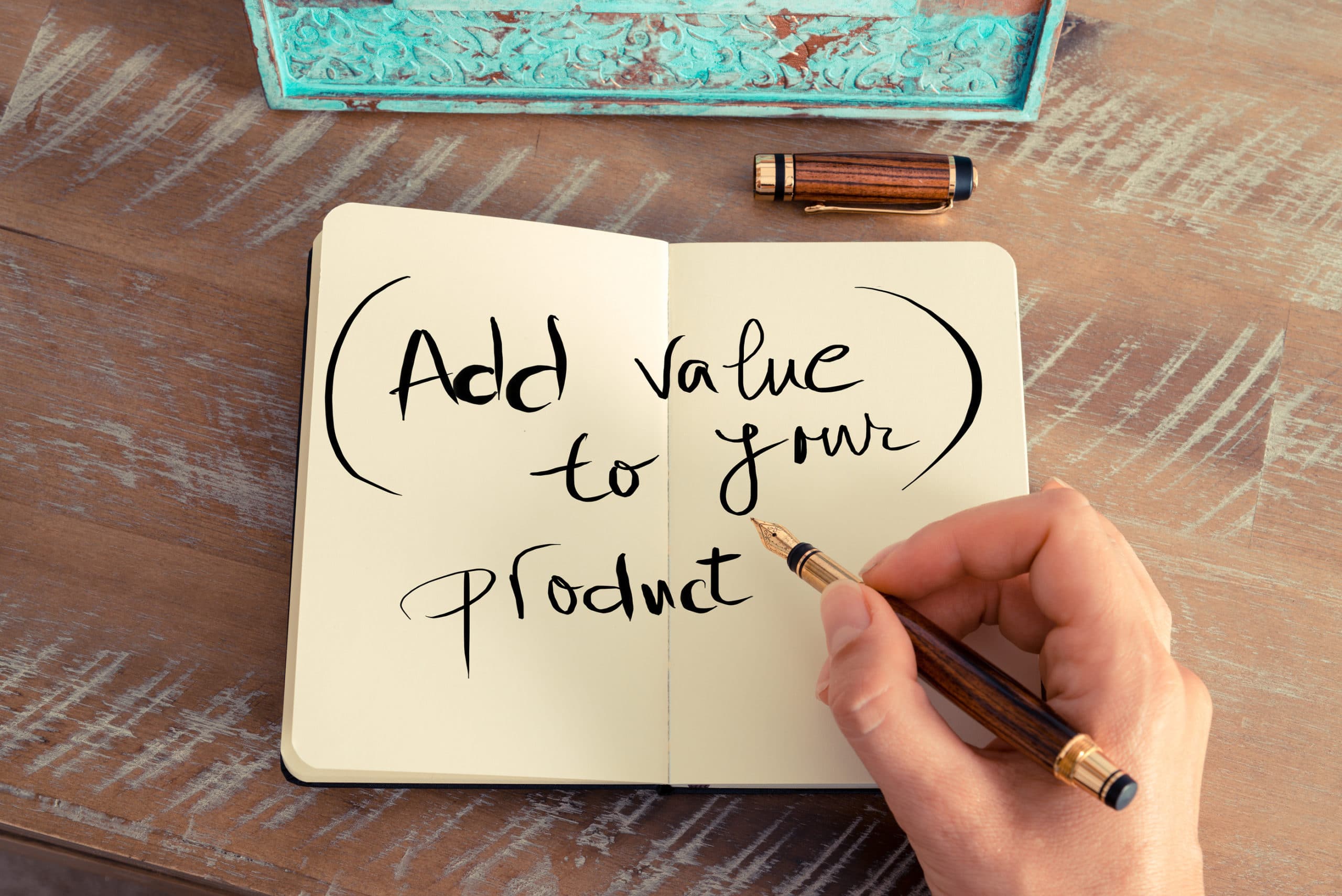Marketing trends in 2018 were heavily focused on the new options created through updated technology, and this will continue to shape the industry through 2019. Continue reading “How the best marketing trends of 2018 will impact brand retention in the coming year”
Category: Brand Affinity
Why brands should utilize customer loyalty programs in retail to incentivize the shopping experience
Measuring the efficacy of customer loyalty programs in retail can also help brands discover their most valuable micro-influencers. Continue reading “Why brands should utilize customer loyalty programs in retail to incentivize the shopping experience”
How your brand can leverage its influences on consumer behavior
Internal and external influences on consumer behavior can completely shift their perception of a brand in an instant. Continue reading “How your brand can leverage its influences on consumer behavior”
Engaging customers in retail with video greetings can lead to better brand retention
Personalization is a significant factor in engaging customers in retail. Continue reading “Engaging customers in retail with video greetings can lead to better brand retention”
Why integrated marketing communication is crucial for establishing consumer trust
Integrated marketing communication is more critical now than ever, as there are so many ways for brands to communicate with consumers. Continue reading “Why integrated marketing communication is crucial for establishing consumer trust”
Three effective marketing strategies to attract customers
An effective marketing strategy to attract customers is something that is necessary in every industry, from CPG brands to restaurants to major retailers. Continue reading “Three effective marketing strategies to attract customers”
Rewarding consumer experiences anytime, anywhere
Bill Demas, Chief Executive Officer
Our vision as a company is to create rewarding consumer experiences for our users anytime, anywhere. We are taking another step in fulfilling that vision today by releasing a web version of Shopkick. This gives users more ways to earn kicks and discover new products, brands and services.
For our partners, the expansion to desktop completes our omnichannel solution, offering deeper insight into consumer behavior across channels and throughout the fragmented shopping journey. Brands and retailers now have the opportunity to reward our users for shopping across desktop, mobile and brick and mortar.
Launch partners include Walmart, Macy’s, Groupon, JCPenney, Sephora, Sam’s Club, Payless, the Body Shop, Stride Rite, Ann Taylor, Loft, Nordstrom, Francesca’s, Lane Bryant, Foot Locker, Sur La Table, and See’s Candies. In addition, we continue to expand our online merchants in the Shopkick app. Most recently we have added Asos, eBags, Etsy, Fandango, the Home Shopping Network, Hulu, Lane Bryant, and Living Social.
Stay tuned for more announcements coming soon on our exciting product roadmap! To learn more about our new e-commerce offering, get in touch at partners@shopkick.com.
If you have any feedback on this new initiative or any other Shopkick omnichannel solution, send me your thoughts at ceo@shopkick.com.
Added value marketing: 3 easy ways to incentivize your customers
A win-win for both a brand and its customers, added value marketing offers the consumer many more incentives and rewards than standard marketing does, while simultaneously costing the brand very little compared to other advertising methods.
 Added value marketing—commonly referred to as value-added marketing—is a strategic method of advertising used for building brand affinity. It creates a connection with the customer that increases their receptiveness to a brand’s message. However, while many marketing materials might fit the mold of added value, not all will offer the same impact. Modern CPG marketing trends show that any approach to advertising must be more than just a sales pitch. Added value marketing needs to offer information about the company, incentivize consumers to share the brand’s message, and, perhaps most importantly, explain how the product solves a consumer’s problem.
Added value marketing—commonly referred to as value-added marketing—is a strategic method of advertising used for building brand affinity. It creates a connection with the customer that increases their receptiveness to a brand’s message. However, while many marketing materials might fit the mold of added value, not all will offer the same impact. Modern CPG marketing trends show that any approach to advertising must be more than just a sales pitch. Added value marketing needs to offer information about the company, incentivize consumers to share the brand’s message, and, perhaps most importantly, explain how the product solves a consumer’s problem.
The concept of added value is a marketing strategy based on perception; the value usually can’t be measured in dollars and cents. Instead, it’s measured in how much the customer values what they’re being offered. As such, added value marketing can be a bit difficult to manage and assess effectively. However, when successful, it can offer a major boost to a brand’s reputation—and its bottom line.
Provide Digital Collateral Materials
Collateral materials refer to any marketing materials that accompany a product; they support a sale by clearly introducing a company and a product to a consumer considering a purchase. This is a very broad concept that can be applied to a wide range of platforms.
Traditionally, these marketing materials have accompanied more expensive items. However, digital channels have made this a more accessible approach to added value marketing for products at every price point.
Marketing materials can now be used to add value to a purchase and reach consumers while they’re in the shopping aisle via:
- In-store digital displays: In-store digital displays can be used to showcase the history of a company or information about a new product. A case study for this approach comes from a popular makeup brand. The brand offered in-store digital displays featuring several social media influencers demonstrating the use of new products. The company was able to leverage the power of social media to add value, aka a tutorial, to the makeup purchase experience.
- Mobile demonstrations: A well-known soap company chose to offer a mobile video experience so that potential buyers could compare for themselves the results of using the company’s products versus their competitors’. The quick video clips were offered on a mobile app as well as via the brand’s social media pages. They were inexpensive to make and resulted in an increased consumer interest in the brand.
- Downloadable eBooks: eBooks, online tutorials, and downloadable PDF guides can provide information and instructions for a product’s use while minimizing the cost of supplying these materials to the consumer. If these marketing materials are available to the consumer before purchase, they can help to increase sales, essentially advocating for a sale of the product on behalf of the company.
Digital collateral allows a brand to connect with consumers in the purchase moment. This creates a more personal experience, one that encourages the consumer to spread a brand’s message. It’s a standard customer relationship building strategy that establishes the company as a subject matter expert.
Incentivize Brand Ambassadorship
Brand ambassadors are quite possibly a brand’s most valuable customers. Why? Other consumers trust them. In one study, it was noted that 84% of consumers trust online customer reviews as much as they trust the recommendations of friends. The reason for this is that they consider other, anonymous consumers to be unbiased.
Cultivating brand ambassador relationships is something which any brand can take part in and it doesn’t require a large investment—or even the endorsement of a well-known person. Here are a few ways to create and encourage brand ambassadors:
- Sweeps for shares: Social media shares are a highly effective way to earn attention for a product or brand. However, getting consumers to share social media ads can be a challenge if something isn’t offered in return. Many companies use online raffles, or sweeps,›› that offer consumers the digital version of a raffle ticket in exchange for sharing a post. This is an easily scalable added value technique that often only requires giving away a single free sample product to the winner of the raffle.
- Referral bonuses: When a customer refers someone to a product, they should be recognized. Shopkick, a shopping app which rewards points to consumers for interacting with brands, leverages this tactic by offering additional points to its users each time they refer a new active user to the app. This approach is highly successful at creating consistent user base growth.
- Online parties and events: One way to gain brand ambassadors and social media shares is to have a scheduled online event where users can ask questions in real time, get to know other users, and gain insider information on a company. It works to humanize a brand and encourages engagement and excitement for a product.
Incentivizing individuals to spread a brand’s message does not have to be an expensive approach to added value marketing. Again, this incentive is all about perception. If the consumer perceives value in spending their time sharing a brand, they’ll participate. They’re more likely to do this when they view a brand not just as a company, but as a company that cares.
Helping Rather Than Selling In Added Value Marketing
Added value marketing focuses not on selling to the consumer but, instead, on helping them. Brands should consider the desired uses of a product and why a consumer would turn to their brand specifically. Offering the answer to a consumer’s problem is a way to build brand affinity. That affinity is something the consumer views as added value; when they purchase a product, they’re not just getting a product, but also the expertise of the company behind that product.
Brands can incentivize consumers via added value marketing in a way that provides an emotional connection rather than an immediate monetary return. It’s about consumers trusting a brand. That trust comes from giving them important information about a company and its products, incentivizing consumers to share the brand’s message, and offering marketing that helps them, rather than simply sells to them.
Shopkick helps our partners provide superior value through its shopping app that gives users kicks for engaging with brands. For more information on how our app incentivizes customers, contact our team today.
Image courtesy StanciuC
The future of video advertising on social media: Why your brand must be mobile
The two fastest growing segments in the digital space are video and social media. So, when it comes to where to place video advertising, social media is a high priority for marketing professionals. Continue reading “The future of video advertising on social media: Why your brand must be mobile”
CPG video advertising monetization in the age of the mobile app
Often, the strategies for video advertising monetization are discussed not by content producers, but by the publishers who make money off those advertisements. Continue reading “CPG video advertising monetization in the age of the mobile app”
Modern customer relationship building strategies for the digital shopper
Customer relationship building strategies are one of the cornerstones of marketing to help increase brand awareness, build market share and growth, and improve overall product perception. Many companies are seeking ways to leverage expansions in artificial intelligence and utilize smart technologies to create meaningful conversations with customers. Most modern customer relationship building relies on technology in one form or another, so knowing how to capitalize on will be an integral aspect of any given consumer-focused strategy.

It may seem contradictory to use technology to build customer relationships since technology often lacks a human touch, but tech is the most efficient way to manage thousands of customer relationships or more. The key is to temper technology-based responses with human ones, so customers still feel as though they are being heard on an individual level. By implementing new technology—beacons, bots, and mobile shopping apps—you can build a relationship with your customers that will keep them loyal to your brand without placing an undue burden on your resources or harming your bottom line.
Customer Relationship Building Strategies With a Tech Twist
Dollar Shave Club is a great example of a company that managed to segue personal customer relationships into a billion-dollar success story. The company made a name for itself by selling memberships to an automatic razor delivery service, but it built a brand off of its outstanding customer relationships by developing experiences for consumers that still include:
- Exclusivity: Members of Dollar Shave Club are given access to an insider newsletter and receive regular, personalized messages from the brand. Club members are also entered into a referral program that rewards them for inviting others to join the service.
- Engagement on social media: Users of Dollar Shave Club can post images of their deliveries to the company’s Facebook page. The brand then selects their favorite posts, and the winners receive a free T-shirt. Providing a creative and engaging customer rewards program—whether for points, merchandise, or cash back—can be a powerful relationship building tool.
- Rapid responses: The average response time to an email sent to the team at Dollar Shave Club is less than a day. Questions or complaints posted to social media sites are answered within a few hours. Rapid responses build trust between consumers and the brand and make their loyal subscribers feel their concerns are being considered and addressed.
- Personalization: Dollar Shave Club uses data from their customers to send occasional personalized messages and upgrade offers. Use of this data allows the company to promote highly specific products in their monthly email messages, which increases the likelihood of conversion.
Each of Dollar Shave Club’s strategies is dependent on delivering their message in a personalized way, so the consumer feels the brand is speaking directly to them. Technology allows Dollar Shave Club to maintain an air of personalization, while also advertising on a mass scale.
Tech That Automates Personalization for Building Customer Relationships
Technological advancements like machine learning, data collection, and artificial intelligence, are making it possible to deliver messages and engage customers without investing significant man-hours. This allows companies to leverage the flexibility of technology while maintaining a small, intimate atmosphere around their brand.
Here are just a few options that allow even large-scale companies to manage this strategy successfully:
- Auto response bots: Auto response bot systems are a new take on the touchtone hotlines of old. These systems are capable of recognizing important keywords and responding in a way that feels genuine. For example, a consumer might type in, “I’m having a problem with my billing.” The bot could then be set to respond, “I’m sorry to hear about that. Let me help you. I currently have your billing information as X? Is this correct or do you need to change it?”
- Customer experience managers: Customer experience managers, which are mainly database systems designed to collect and organize your customer data, allow companies to separate said data into various audiences for retargeting. So, in the example of Dollar Shave Club, a female consumer may be more concerned with razors for shaving her legs, while a man might be more interested in how to avoid beard rash. Or, an older consumer might have more issues with ingrown hair due to thinner skin, while a younger one might have problems with shaving cream irritating acne. All of these factors can be accounted for by implementing a CEM to personalize experiences for specific consumers.
- In-store beacons: Bluetooth-enabled devices that communicate with smartphones are helping build relationships with consumers as they’re in the shopping aisle, an aspect of mobile retail proximity marketing. Upon entering a retail location, a shopper’s mobile device receives a signal from a beacon if they have downloaded the retailer’s in-store app. The app will then offer the shopper deals, coupons, or location details for items he or she has previously purchased or shown interest in.
- Shopping apps: Shopping apps allow brands to connect with consumers at the very moment they are looking for advice on where to shop and what to buy. These apps often offer rewards for purchasing or scanning the barcode of a featured brand. This kind of incentivized shopping experience allows brands to build a relationship and understand buyer behavior.
Connecting with consumers must include developing a way to personalize their experience quickly, efficiently, and seamlessly. This is best accomplished via the use of technology. Shopping apps, in particular, allow brands to connect directly with consumers at the very moment they are planning to make a purchase or seeking guidance.
Customization and personalization, backed by technology, helped Dollar Shave Club build a following for their brand. They understood what was important to consumers and chose to connect with them in a unique way. This customer relationship strategy helped them build their audience on an individual level, even as they expanded into a billion-dollar business. And your brand can follow suit by using a shopping app to power your connection to your buyers.
Well-designed shopping apps that make everyday shopping more personal and rewarding can give you access to real-time customer data, allowing you to make in-the-moment and relevant recommendations. They also allow you to create a relationship with a customer which can turn them into a loyal user.
Shopkick helps our partners build relationships with consumers by offering them opportunities to earn rewards for engaging with your brand. For more information on how Shopkick can help you create a stronger consumer connection, contact our team today.
Image courtesy onephoto











